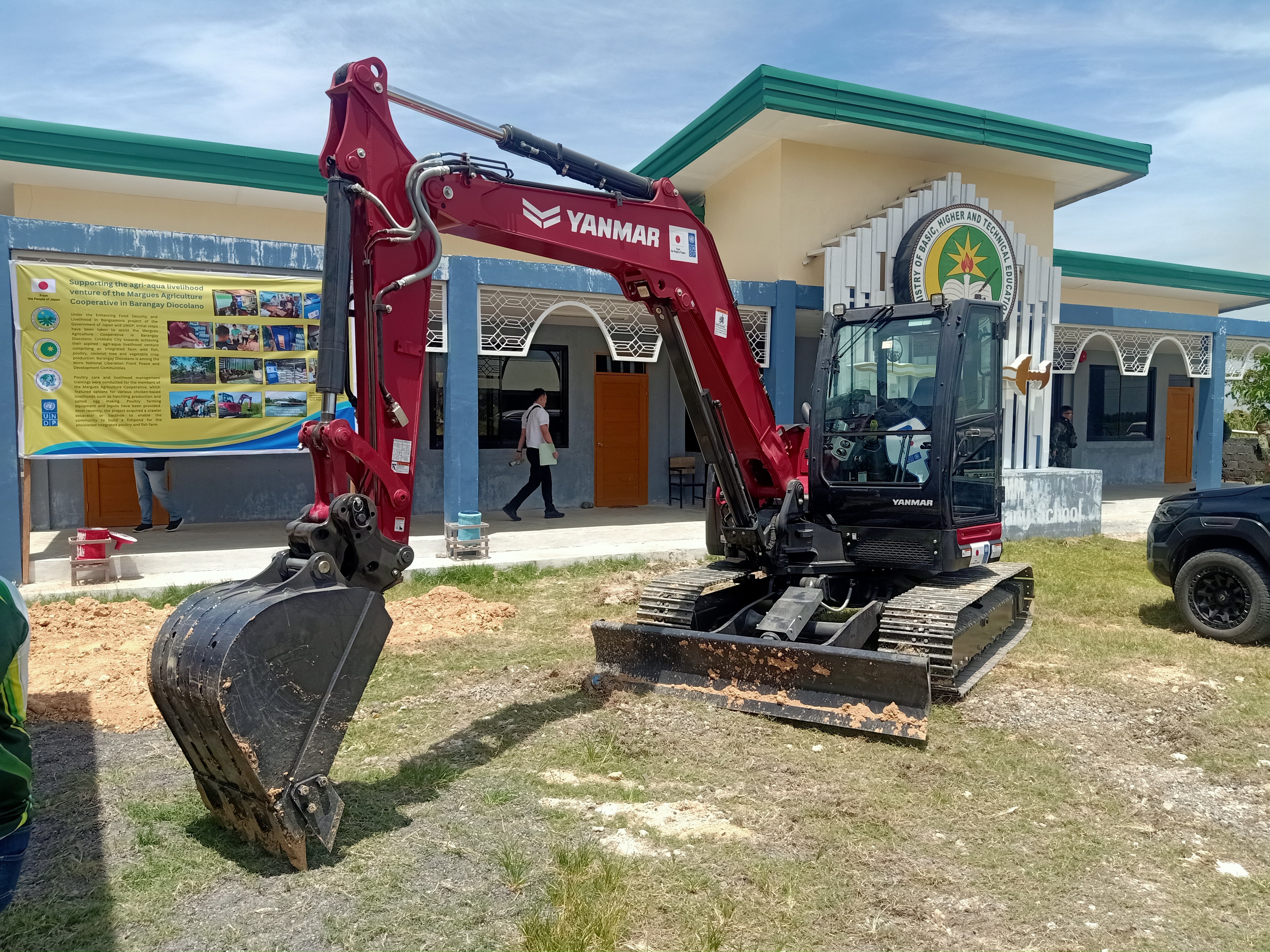From arms to farms: MNLF camp undergoing transformation to empower residents

COTABATO CITY – A Moro National Liberation Front (MNLF) camp here is undergoing a massive transformation process to make it a hub of peace and progress, and jumpstart the transformation of former rebels from holding arms to cultivating farms.
Camp Saffarudin is a three-hectare MNLF camp situated in the boundaries of Barangays Margues (Tamontaka 5 in Cotabato City and Upper Margues in Datu Odin Sinsuat, Maguindanao del Norte province) and Barangay Lower Taviran in Mother Kabuntalan, also in Maguindanao del Norte.
Promises of development in the Bangsamoro Autonomous Region in Muslim Mindanao (BARMM) were abundant especially after the enactment of Republic Act 11054 or the Bangsamoro Organic Law (BOL) in 2018. The law paved the way for the establishment of the BARMM the following year.
Among these initiatives include the comprehensive rehabilitation and development of Camp Saffarudin from a conflict zone to an eco-tourism hub.
Officials from the United Nations Development Programme (UNDP) – the United Nations’ lead agency on international development – and the Government of Japan turned over a backhoe to Barangay Diocolano in Cotabato City, which is considered as a peace and development community (PDC) of the MNLF, on Tuesday, March 5.
The backhoe will be used by the community in excavating a fishpond that they will later surround with coconut and fruit trees. Beside it, a planned poultry farm will be established.
The initiative was part of the “Enhancing Food Security and Livelihood in Bangsamoro" (FSL) project being implemented by the UNDP and funded by the Japanese government. The FSL project aims to support and sustain peacebuilding and recovery in the Bangsamoro by focusing on improving food security and livelihood within the communities.
“The Bangsamoro and the current peace process is not only limited to MILF [Moro Islamic Liberation Front] communities. UNDP, in partnership with Japan, is very specific in targeting communities for beneficiaries of the project. We not only limit our interventions in the MILF communities but we also reach out to indigenous peoples, settler communities and MNLF communities,” said Winston Aylmer Camarinas, UNDP Head of Cotabato Office.
Diocolano, the birthplace of MNLF
Barangay Diocolano (formerly Tamontaka V) houses portions of Camp Saffarudin. It is considered as the birthplace of the MNLF as it is where many of their commanders and fighters were based when it began its independence struggle in 1969.
At the time, many Christians settled in Mindanao from Luzon and Visayas after the World War II, leading to intensified conflicts with Muslims over political, economic and social governance as well as land rights of the indigenous Muslim population.

Many of the community members in Barangay Diocolano hold special ranks in the MNLF including the current village chief, Datun “Doc” Diocolano, 72.
Diocolano is the incumbent chief of staff of the Bangsamoro Armed Forces, who is also a veteran fighter of the MNLF. He joined the MNLF when he was 18 years old.
Following the signing of the 1976 Tripoli Agreement, the precursor to the 1996 Final Peace Agreement between the Philippine government and the MNLF, Diocolano laid low and was never seen.
But despite the historical significance of Barangay Diocolano and its crucial role in the Bangsamoro struggle for the right to self-determination, the community faced challenges in receiving adequate development and support from the national government over the years.
Diocolano was patient enough not to return to waging a revolution amid the lack of development in the area. Instead, he resurfaced after nearly five decades of disappearing from public eye to try his luck on politics, a complete turnaround from his previous experience as a fierce fighter. He was trained in Libya in 1978, and in Sabah, Malaysia in artillery course.
In the 2023 Barangay and Sangguniang Kabataan Elections (BSKE), Diocolano ran as the village chief and won.
“Medyo napag-iwanan kami. Ngayon, lahat ng commanders ng cause namin, nandito na at nagsurface na kami para makita niyo kung paano gawin ang reality na ‘yan (We were left behind. Now, all the commanders of our cause, we are here and we surfaced to show how we will [transform the community] and make it a reality),” Diocolano said.
To address the lack of development in the community, Diocolano and the barangay leaders sought assistance from the BARMM government and humanitarian agencies to embark on an agri-aqua livelihood adventure, transforming their community through sustainable livelihoods.
They were provided with a capacity-building training on poultry care and livelihood management by the UNDP in collaboration with the Kadtabanga Foundation for Peace and Development Advocates, Inc. and the Ministry of Agriculture, Fisheries, and Agrarian Reform (MAFAR) of BARMM.
As part of the camp transformation, public service infrastructure will also be established including public markets, passenger terminals, road networks and bridges, health centers, a public cemetery, and 500 housing units at Camp Saffarudin.
Major portions of Camp Saffarudin will also be developed for eco-tourism with features of planted cherry blossom trees along the periphery of Liguasan Marsh, while the tomb of Datu Ali Sansaluna, a Moro revolutionary leader, will be developed as a potential historical site.